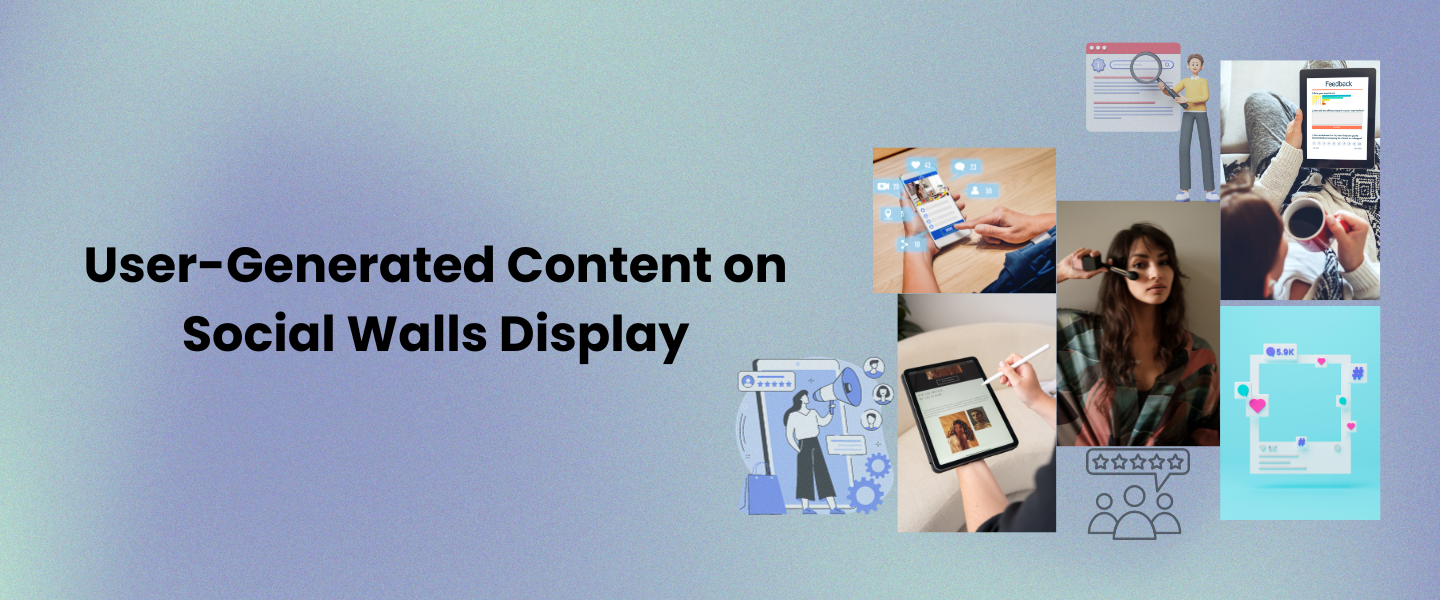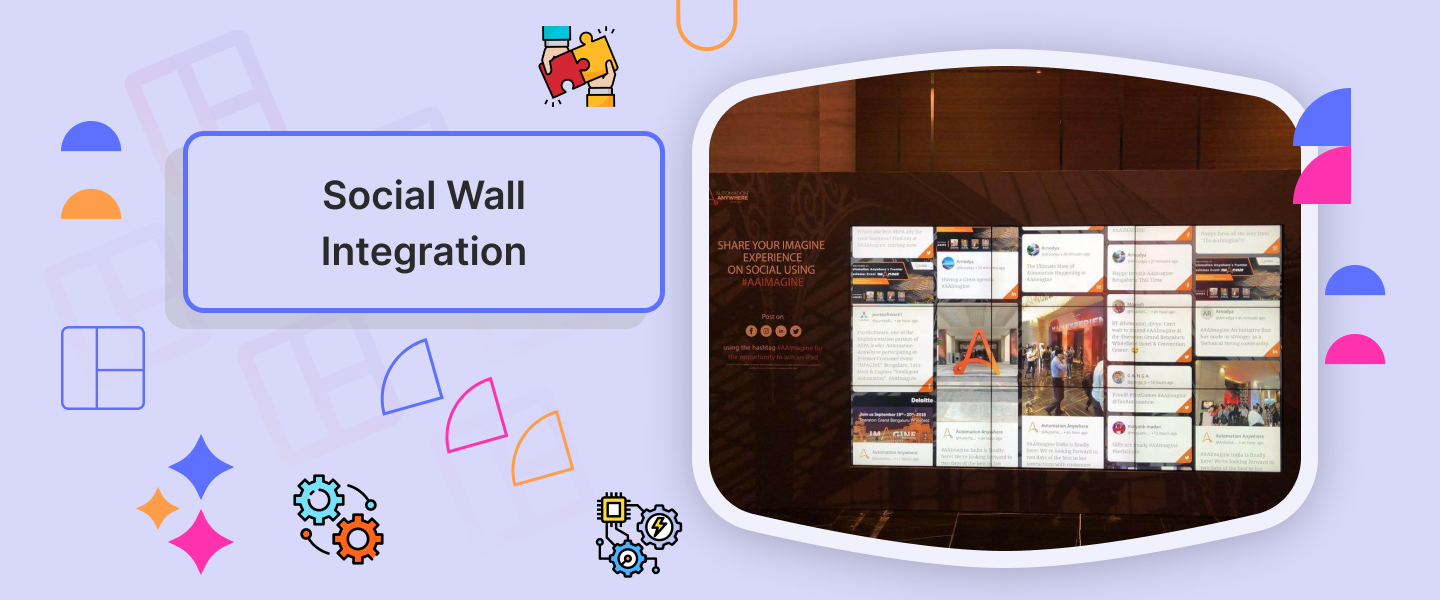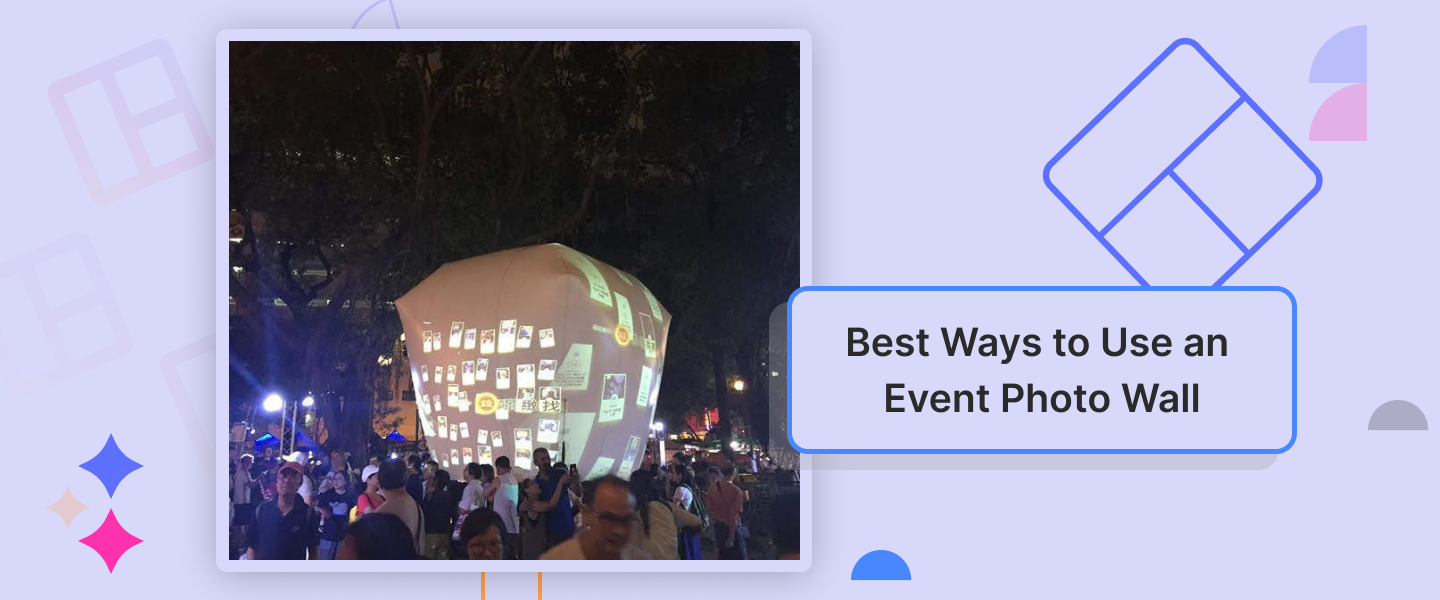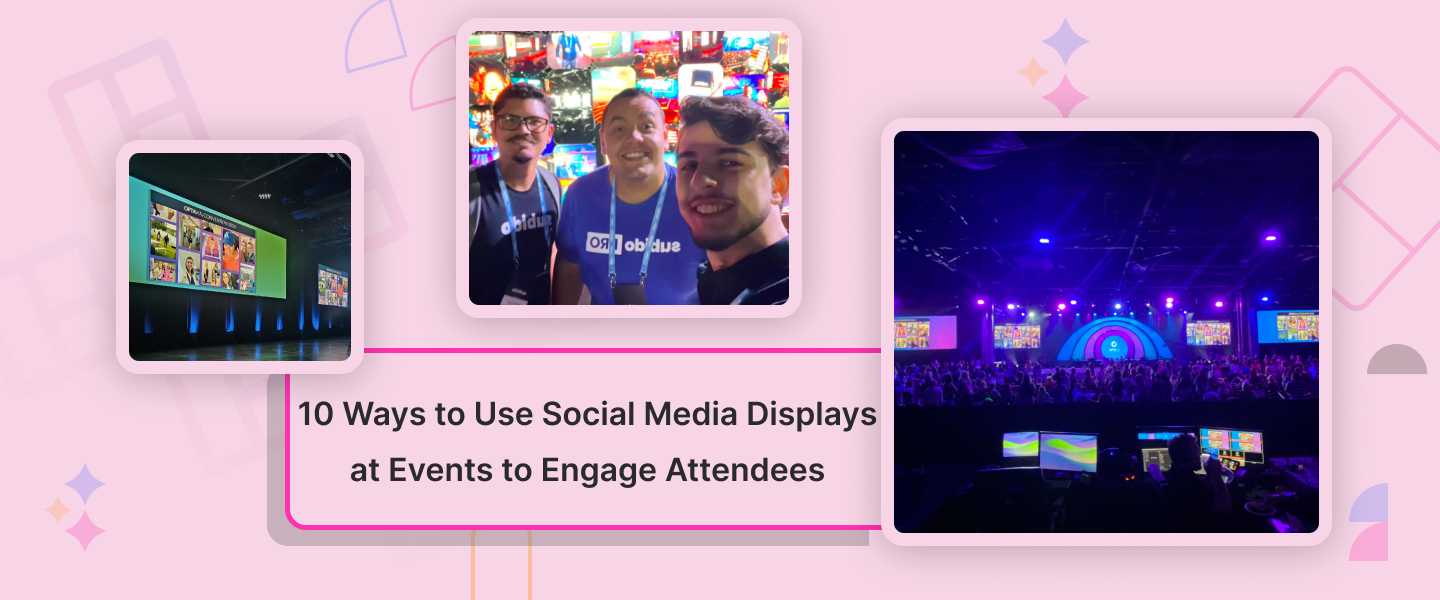User-Generated Content on Social Walls Display: A Legal Guide of Rights And Consent
7 minute read
December 1, 2023
Today, the internet is packed with content created by product users from multiple brands. From influencer collaborations to customer reviews on social platforms, users share their experiences with different brands.
As per statistics, adding user-generated content to social walls not only boosts engagement and drives sales, but over 90% of consumers say that UGC about a brand influences their shopping decisions.
But the question is, can brands fetch and use this content on their websites or flaunt user-generated content on social walls at events to benefit from it? Is there a process to get permission? And why bother doing all this?
It might seem simple, but there’s a lot to figure out. Using personal content involves rules, mainly because legal stuff pops up. Brands need the creators’ approval before using what they make.
This blog will discuss some essential things you must know before going further with the curated UGC.
So, let’s jump in and learn more about it without wasting time!
Understanding UGC rights management
Handling the legal and ownership rights of user-created content is called UGC Rights Management. It includes brands dealing with issues like copyright, permissions, licenses, and fair use of customer’s content on different social media platforms and campaigns.
Apart from that, it also means to create or set a standard of safety and security for the user content of any brand. Let’s see how you can display and take advantage of displaying UGC on social walls.
User-generated Content on Social Walls At Events
As a brand, you can showcase authentic user-generated content on social walls that can help brands build a credible image and create an environment of trust and genuineness,
A pervasive example of UGC display and how it can help both the brand and its customers is Amazon, as it not only showcases honest reviews and visuals of buyers to build trust towards the brand but also acts as a guiding force for new and potential buyers.
Learning from this, you can go with flaunting your customer’s YouTube shorts for events, Instagram posts, or reviews on your digital screens and exhibit the trust of customers to your guests.
But to get to the benefits of social wall displays, you must first know the type of UGC consent you need as a marketer.
Types of UGC Consent Every Marketer Needs
UGC, or User-Generated Content, refers to individual content, including customer reviews, social media feeds, and more. When marketers want to use UGC for promotional purposes, they typically need consent from those who created the content.
Here are a few types of permissions that, as a marketer, you might need to consider before using your user-generated content on social walls at events, on the website, or any other digital signage.
Implied Consent
As a customer, when you voluntarily submit content to a brand’s official social media page, website, or platform, you are assumed to have implied consent for promotional purposes related to the brand or product by participating and sharing content in these spaces.
Explicit Consent
Explicit consent involves obtaining a direct agreement from the user to use their content for marketing purposes. This can be achieved by having users check a box to indicate that they agree to the terms and conditions, including using their content in marketing materials.
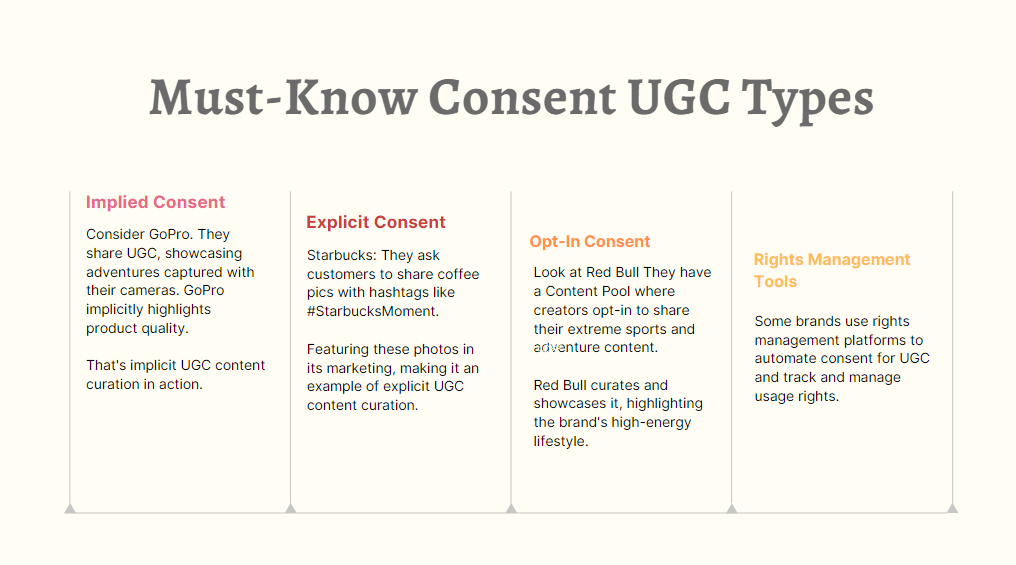
Opt-In Consent
Moving onto the Opt-in consent involves customers actively allowing the brand to use their content. This could be through a specific request for permission, such as sending a direct message to the user asking for approval before using their content.
Rights Management Platforms
Some brands use rights management tools or platforms that facilitate obtaining and managing permissions for UGC. These platforms often automate acquiring consent and provide a tracking and managing usage rights system.
Best Practices for UGC Curation And Approval
Obtaining consent for using User-Generated Content (UGC) is crucial to ensure that marketers can leverage customer content legally and ethically. Integrating social walls at your events to catch more eyes is not enough; you need to strategize and play carefully with your user-generated content on social walls.
Here are different ways to obtain UGC consent and get the desired results.
Direct Request
Brand marketers can directly reach out to users who have created content and request permission to use it for promotional purposes. This can be done through direct messages on social media, emails, or other communication channels.
But more than simply extracting content rights from users is required; it’s essential to explain how the content will be used and allow users to grant or deny permission.
Hashtag Campaigns
Creating and displaying branded hashtags and encouraging users to use them when posting content related to the brand or a specific event is a popular way to generate UGC. When users participate by using the hashtag, they often consent to the brand’s use of the content.
However, it’s advisable to include clear terms and conditions associated with the hashtag campaign, specifying the intended use of the content.
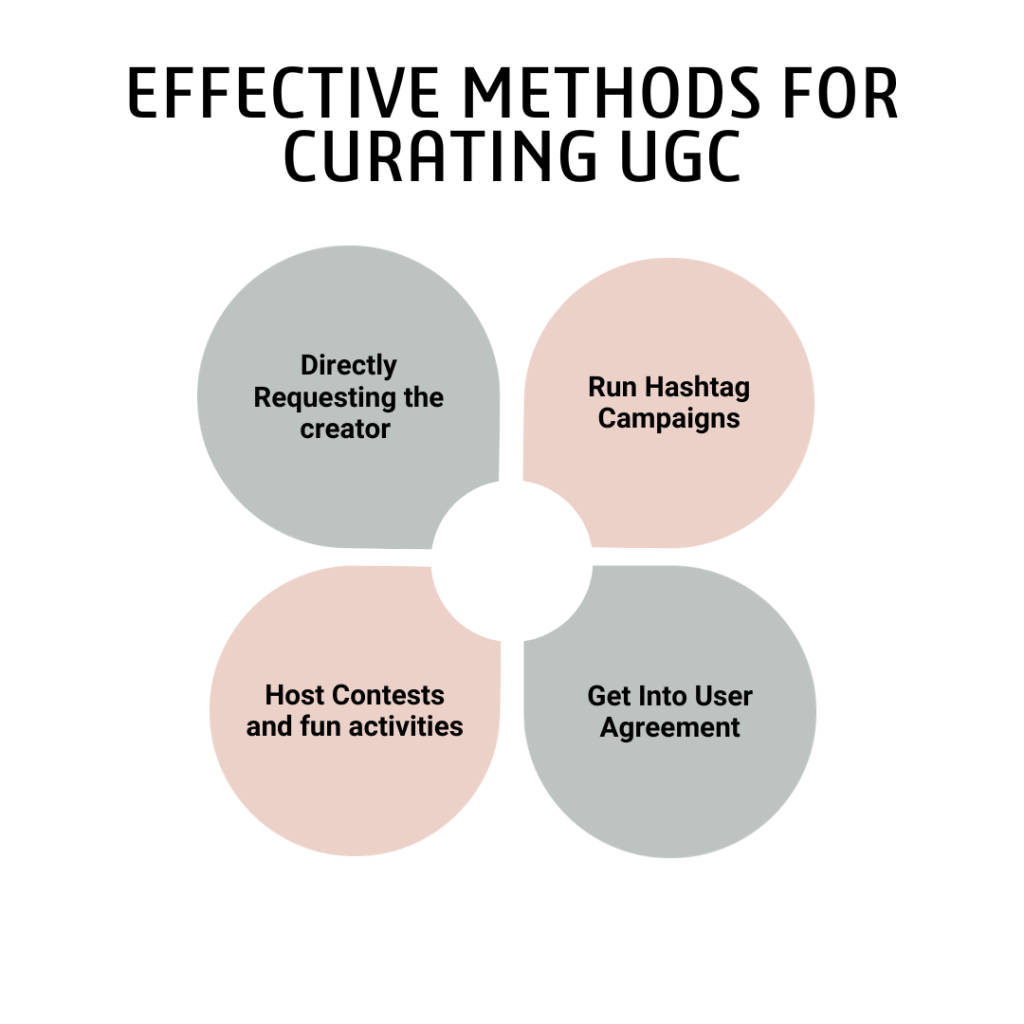
Contests
Running contests or competitions that involve user-generated content can be an effective way to obtain authentic consent. Contest rules can include that by entering the contest; participants grant permission for the brand to use their content for promotional purposes. You need to ensure that the terms and conditions are clearly stated.
Customize your social media wall to align with your event theme and make it more engaging and fun through gamification activities.
User Agreement
Including an agreement in your terms of service or user agreement that outlines how user-generated content may be used can act as consent.
When users sign up, they agree to these terms, allowing the brand to use their content for marketing purposes. It’s crucial to make these terms easily accessible and understandable to users.
The Role of UGC Rights Management Tools
You can choose a UGC rights management tool, a valuable resource for brands to manage user content creation efficiently and legally. Here’s how.
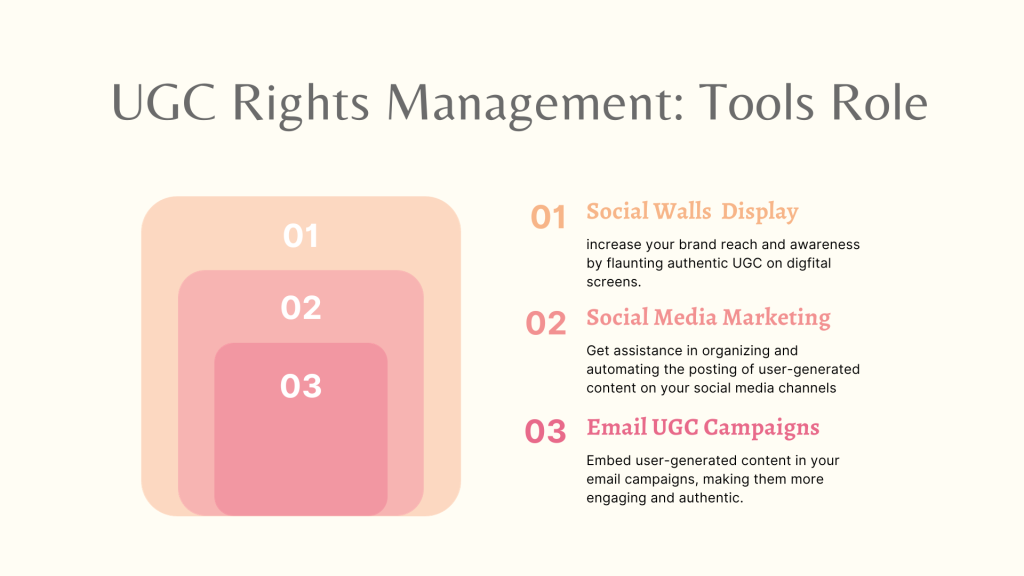
Display on Social Walls
You can use the UGC rights management tool to fetch social media feeds from multiple social media platforms using specific hashtags or QR codes, including moderation features to filter and approve content that aligns with brand guidelines.
You can automatically or manually seek user rights for the content you want to display. The tool also offers real-time updates, allowing you to display the latest UGC during events or on your digital properties.
Social Media Marketing
As a brand, use a social wall tool to curate and collect relevant UGC from social media for your brand or campaign. The tool can help automate obtaining user rights so that you can effortlessly display content on social walls at events.
Plan and schedule social media campaigns that feature UGC. The tool can assist in organizing and automating the posting of user-generated content on your social media channels.
Email Campaigns
UGC management tools offer multiple services, including automating sending permissions to users whose content you want to feature in your email campaigns.
Embed user-generated content in your email campaigns, making them more engaging and authentic. Also, for those looking to ensure their email communications are secure, consider exploring a guide on the DMARC aggregate report explained to learn more about how you can protect your email reputation and improve email deliverability.
Apart from all these facilities, you can quickly moderate your social media content with genuine UGC to build trust, help others make an informed decision, and work in a safe and approved environment.
Let’s Wrap Up!
As a brand, you must safeguard your user’s creative work to prevent unauthorized use and protect their intellectual property.
Implementing efficient User-Generated Content rights management processes is essential for achieving this.
Doing so will safeguard your customer’s content and make them trust your brand in sharing their work, creating a fair and secure digital environment.
So, start implementing this step in your marketing plans now.

